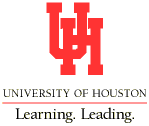|
In this talk, we will survey the use of various modern mathematical
techniques for several key problems in medical imaging. First we will
describe the use of various geometric curvature based flows for fast
reliable segmentation of medical imagery both in 2D and 3D. This will lead
to modern approaches to the topic of geometric active contours. The term
"active contours" does not refer to one specific technique, but rather to
a broad family of related methods that can be tailored to a specific image
processing task. Both local (edge-based) and global (statistics-based)
information may be included in this framework. The underlying principle is
based on the use of deformable contours that conform to various object
shapes and motions. Active contours are used for edge detection, image
segmentation, shape modeling, and for tracking. Further we will give some
directional active contour models for extracting white matter fiber tracts
in Diffusion Weighted Magnetic Resonance (MR) imagery. Related flows for
smoothing and enhancement will also be considered. These flows have certain
interesting invariance properties that can be tuned for several important
tasks in general image processing and computer vision. We will provide some
of the relevant results from the theory of curve and surface evolution in
order to motivate our methods.
Next, we will outline some recent work using conformal mappings for the
visualization of the cortical brain surface and automatic polyp detection
in virtual colonoscopy. Regarding the former problem, we show how the
method may be used in functional MR imagery to better visualize brain
activity. Regarding the latter problem, we demonstrate how the conformal
flattening approach leads to a surface scan of the entire colon as a cine,
and affords viewer the opportunity to examine each point on the surface
without distortion. Both flattening tasks (brain and colon) employ the
theory angle-preserving mappings from differential geometry in order to
derive an explicit method for surface flattening. Indeed, we describe a
general method based on a discretization of the Laplace-Beltrami operator
for flattening a surface in a manner that preserves the local geometry.
From a triangulated surface representation of the surface, we indicate how
the procedure may be implemented using a finite element technique, which
takes into account special boundary conditions.
The talk is designed to be accessible to a general audience with an
interest in medical imaging. We will demonstrate our techniques with a wide
variety of medical images including MR, CT, and ultrasound.
|

